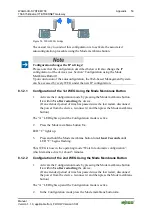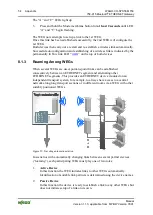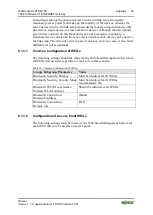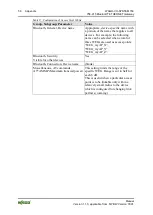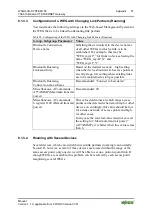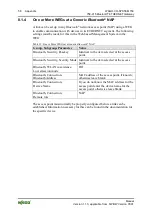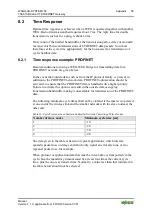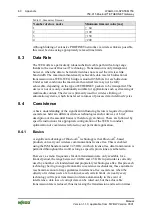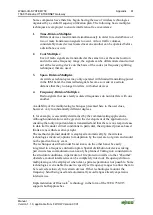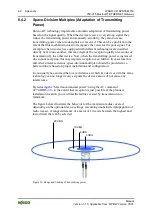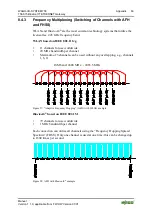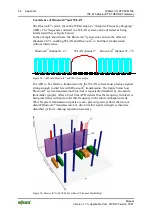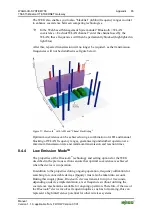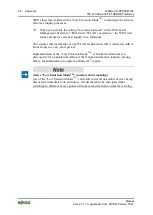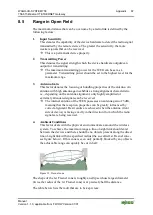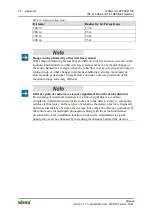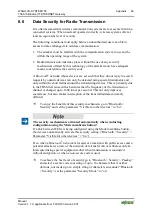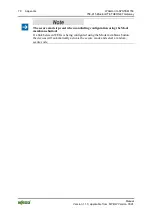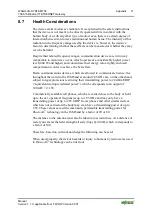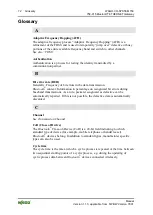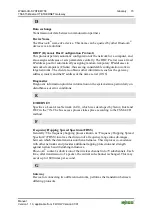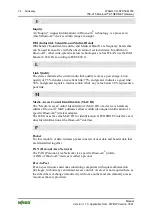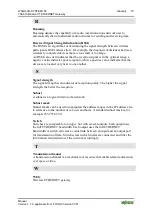
60
Appendix
WAGO-I/O-SYSTEM 758
758-915
Bluetooth
®
ETHERNET Gateway
Manual
Version 1.1.0, applicable from FW/HW Version 01/01
Table 31: Mandatory Timeout
Number of slave nodes
Minimum timeout value [ms]
1
≥ 60
2
≥ 100
3
≥ 150
4
≥ 200
Although linking of extensive PROFINET networks via wireless links is possible,
this must be done using appropriately relaxed time limits.
8.3
Data Rate
The WEG offers a particularly robust substitute cable path with a long range
thanks to the use of
Bluetooth
®
technology. Transmission is only transparent,
however, when the data to be transferred does not exceed the wireless link
bandwidth. The maximum theoretically achievable data rate for bidirectional
transmission via a WEG-WEG bridge is around 0.5 Mbit/s for each direction.
Under actual conditions the maximum theoretical rate may not be fully
achievable, depending on the type of ETHERNET packets to be transported. The
device is not or is only conditionally suitable for applications such as streaming of
multimedia content. The device is primarily used for wireless linking of
automation systems, which transfer set volumes of process data in defined cycles.
8.4
Coexistence
A basic understanding of the significant influencing factors is required to optimize
coexistence between different wireless technologies and/or devices. A brief
description of the essential basics is therefore given below. These are followed by
specific instructions for appropriate configuration of the WEG to conduct
optimization of coexistence tailored to your particular application.
8.4.1
Basics
A significant advantage of
Bluetooth
®
technology is that
Bluetooth
®
-based
products can carry out wireless communications license free. This is enabled
using the ISM band at around 2.45 GHz, in which license-free data transmission is
permitted throughout the world as long as specific provisions are adhered to.
However, as radio frequencies for data transmission are only available for a
limited period, the range between 2.4 GHz and 2.5 GHz in particular is currently
used by a number of standardized and proprietary technologies alike. Despite each
technology having to support automatic coexistence mechanisms, these automatic
mechanisms cannot always guarantee interference-free coexistence when the
density of wireless users at a location exceeds certain limits. As nearly every
technology will repeat transmission of data automatically in the event of
interference, data loss or corrupt data can be ruled out, but the achievable
transmission rate is reduced, thus increasing the transmission and reaction times.








